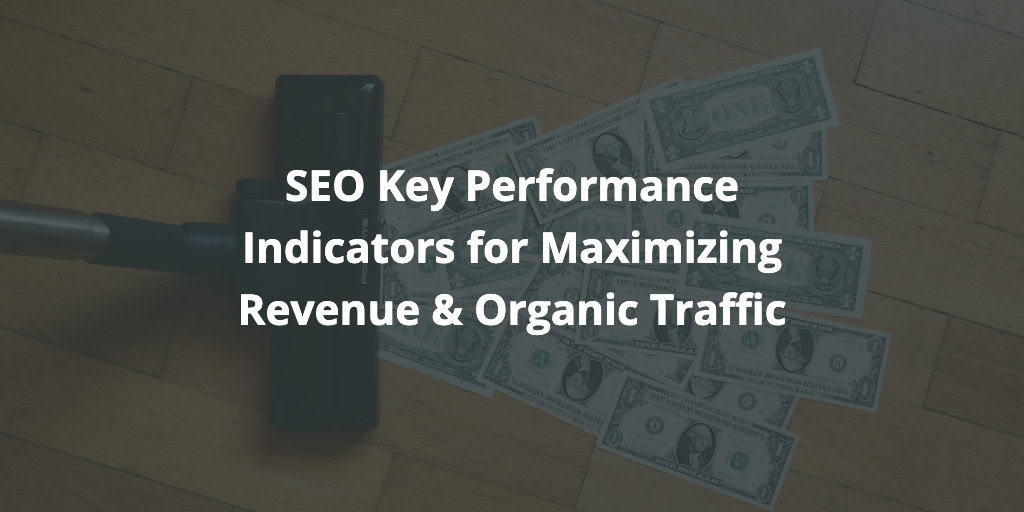In today’s ever-evolving digital landscape, achieving and measuring SEO success is paramount. SEO (Search Engine Optimization) is a multifaceted discipline that demands vigilant monitoring of Key Performance Indicators (KPIs) to gauge the effectiveness of your strategy. In this comprehensive guide, we will explore what KPIs are, and we’ll delve into the most crucial KPIs for measuring SEO success, including the top five that have the greatest impact on revenue.
What is a KPI?
Let’s start with a clear definition of Key Performance Indicators (KPIs).
A KPI is a quantifiable metric that provides insights into the effectiveness of a business or marketing strategy.
In the context of SEO, KPIs are metrics that help assess how well your website is performing in search engines and how it aligns with your business objectives.
The Top 5 Revenue-Boosting KPIs
These are the Top 5 SEO KPIs we track in our SEO Analytics Tracking service.
1. Conversion Rate
- Definition: The conversion rate measures the percentage of visitors who complete a desired action on your website, such as making a purchase or submitting a contact form.
- Impact on Revenue: A higher conversion rate equates to more visitors becoming customers, directly influencing revenue. This KPI is about optimizing your sales funnel for peak efficiency.
2. Organic Traffic
- Definition: Organic traffic refers to the number of visitors who find your website through search engines like Google, Bing, and Yahoo.
- Impact on Revenue: Increased organic traffic means a larger pool of potential customers. When your site is optimized for conversions, this can significantly boost revenue.
3. Keyword Rankings
- Definition: Keyword rankings reflect the positions of your target keywords in search engine results pages (SERPs).
- Impact on Revenue: Higher rankings for keywords with strong commercial intent can drive more organic traffic, ultimately leading to increased revenue. It’s about being visible where it matters most.
4. Click-Through Rate (CTR)
- Definition: CTR represents the percentage of users who click on your search result when it appears in the SERPs.
- Impact on Revenue: A high CTR indicates that more users are clicking through to your website, resulting in increased organic traffic. When paired with a well-optimized conversion process, this can significantly boost revenue.
5. Bounce Rate
- Definition: Bounce rate quantifies the percentage of visitors who leave your website after viewing only one page.
- Impact on Revenue: A lower bounce rate signifies that visitors are engaging with your content and exploring your site. Engaged visitors are more likely to convert, directly influencing revenue.
Additional SEO Key Performance Indicators
In addition to these revenue-centric KPIs, several other vital KPIs play essential roles in measuring your overall SEO performance. These include:
6. Backlinks
- Definition: Backlinks are links from external websites to your site. High-quality and relevant backlinks boost your website’s authority and can lead to improved rankings.
7. Page Load Time
- Definition: Page load time measures how quickly your web pages load. A fast-loading site enhances the user experience and is favored by search engines.
8. Mobile-Friendly Design
- Definition: Mobile-friendliness assesses how well your website caters to mobile users. Given the rise of mobile device usage, ensuring a seamless mobile experience is crucial.
9. Content Metrics
- Definition: Content metrics encompass the quality and relevance of your website’s content. Engaging, informative content attracts visitors and may lead to conversions.
10. User Behavior
- Definition: User behavior KPIs, such as time spent on page and pages per session, provide insights into how visitors engage with your content and navigate your site.
11. Page Indexation
- Definition: Page indexation measures the number of your website’s pages that are indexed by search engines. Ensuring all critical pages are indexed is vital for SEO visibility.
12. Local SEO Metrics
- Definition: Local SEO metrics focus on local search visibility, customer reviews, and Google My Business listings. These are crucial for businesses with physical locations.
13. Engagement Metrics
- Definition: Engagement metrics include time on page, pages per session, and social shares, providing insights into content engagement.
14. Clicks from Google Search Console
- Definition: This metric tracks total clicks, impressions, and average click-through rates in Google Search Console, offering insights into your website’s performance in Google search.
15. Crawl Errors
- Definition: Crawl errors are issues that hinder search engines from crawling and indexing your website. Fixing these errors is essential for SEO health.
16. Content Metrics
- Definition: These metrics assess the quality, diversity, and relevance of your content, which can attract backlinks and engage visitors.
17. User Behavior
- Definition: User behavior metrics, such as the paths users take, exit pages, and areas of interest, provide insights into how visitors interact with your website.
How to Maximize Organic Traffic Using SEO KPIs
Now that we’ve explored these essential SEO KPIs, it’s crucial to understand how to leverage them to maximize your website’s organic traffic. Here are some key strategies to consider:
Optimize for High-Converting Keywords
Use keyword rankings to identify high-converting keywords and create content that targets them. This will attract visitors who are more likely to convert into customers.
Improve User Experience
Lower bounce rates by enhancing the user experience. Ensure that your site is easy to navigate, loads quickly, and offers valuable content.
Build Quality Backlinks
Actively seek out high-quality backlinks from reputable websites. Backlinks are a key factor in improving your website’s authority and search engine rankings.
Mobile Optimization
With the increasing use of mobile devices, ensure that your website is mobile-friendly. Google favors mobile-responsive sites, and this can lead to better rankings.
Content Strategy
Create high-quality, engaging content that not only attracts visitors but also keeps them on your site. Content that addresses user intent is essential for maximizing organic traffic.
Conclusion
By incorporating these strategies and continuously monitoring your SEO KPIs, you can enhance your website’s visibility and drive more organic traffic, leading to improved revenue. Remember that SEO is an ongoing process, and adapting to evolving search engine algorithms and user behavior is crucial for long-term success.




